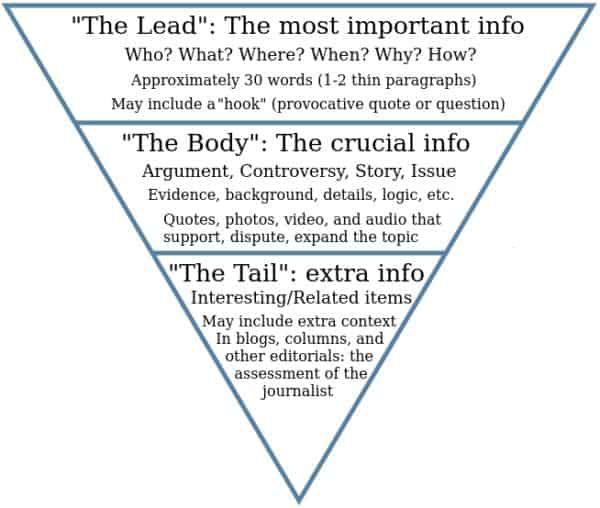Estimated Read Time: 18 Minutes
Table of Contents
In the search world, Google is well known for repeating the mantra “create high-quality content”. It doesn’t tell us precisely how to do that, but it does provide guidance in the form of Search Quality Evaluator Guidelines and Google Search Essentials that explain what it takes to be eligible to appear and perform well in Google search results.
To that end, this post spells out 8 SEO copywriting best practices for content writers wanting to create original, high-quality content. Best practices are derived from:
- more than 15 years of search and SEO experience;
- 25 years of managing IT systems for a Fortune 500 company and the Government of Canada;
- published SEO industry expert research, advice, and opinion; and
- Google’s published search engine guidelines.
The best practices in this post are primarily intended for small business owners and SEO copywriters, although anyone who writes content for the Web should find them helpful. There is an example of high-quality content at the end.
Right. Let’s get to it.
1. Write For Humans

Photo by Priscilla Du Preez on Unsplash
First and foremost, write content for your human audience, not search engines. That means your content should answer the questions searchers care most about. This is called “satisfying search intent” in SEO circles and it means you should put yourself in the shoes of your audience, try to figure out what specifically they are searching for and why, and then give it to them. Google says it is “the single most important thing to do.”
Why else is it important? Nowadays, Google ranks content using machine learning. Machine learning refers to the technologies and algorithms that enable systems to identify patterns, make decisions, and improve themselves through experience and data (source). Those patterns and decisions change, over time. Rather than try to guess what Google might be valuing today, consider what is important to your audience. That’s what Google’s algorithms are all trying to do. If you put yourself in their shoes, you’re more likely to produce a result that not only ranks, it will continue to do so, over time.
2. Satisfy Search Intent, Not Word Count
Quality content that satisfies search intent ranks highest in search results. Search intent refers to what the person wants to do with the information he or she finds with a search query. For example, if someone searches for “SEO copywriting best practices”, they’re probably looking for an explanation of the industry-accepted copywriting techniques that tend to produce the best search results for content writers and owners.
You’d be amazed at all the different ways people can search for the same thing. You’d be amazed at all the different ways people can search for the same thing. I have, for example, a record of thousands of different keyword phrases people have searched for and found various posts on this blog.

Search intent is not always obvious unless the search phrase is lengthy and specific. Google tries to determine the intent behind every query so it can deliver the most relevant, high-quality, and useful information available. It (again) uses machine learning to interpret queries and predict search intent.
Some people believe, and some SEOs have suggested, writing lengthy content is the key to satisfying search intent. That’s just not true. While there is some correlation between high word count and rankings, it is more likely due to the fact that longer content tends to provide more detail. It might satisfy some, but not others.
Website visitors don’t want their time wasted. Your copy should be as long as it needs to be to satisfy search intent and not more. Don’t write extra copy just to hit some “magic” number of words. It will waste visitors’ time, they won’t appreciate it, and they will leave your site quickly – a behavior search engines can interpret as user dissatisfaction which will translate into lower rankings.
If you’re not sure about the search intent behind your target keyword phrase, type it into Google and look at the results. If Google is also uncertain about the search intent, you will see a mix of results indicating your should probably try to expand on your target search phrase (make it longer). If you see a pattern in the results, if they all seems to be answering the same question(s), then you should answer those questions too. But don’t just repeat the same information. Share some deep and original insights based on your extensive and first-hand knowledge of the topic. Provide useful examples, original charts and images, or a different perspective that will help people understand and relate. In other words, make it valuable and your own.
3. Produce Quality Content
Google has told us, time and again, that the key to ranking well in search results is to “produce quality content”. But what do they mean by that?
Google has published general guidelines for quality content. The guidelines are intended to help you understand what you can do to help Google find and understand your content as well as ensure visitors are satisfied with it. They outline and provide examples of some of illicit practices that can result in lower rankings or penalties so you don’t fall inadvertently hurt yourself.
Google also has a blog post called What site owners should know about Google’s core updates. In this post, they say you should be focusing on “ensuring you’re offering the best content you can” and provide a list of questions you can ask yourself to help determine whether your content is, in fact, high quality. I suggest you use those questions as a checklist when you’re evaluating your content for quality. Be objective and honest with yourself.
Next, you should look at the top 10 search results for the keyword phrase you are focusing on – the one you want to rank for. This will not only give you a decent indication of what Google thinks people want to find when they search for your target keyword phrase, it will also give you a sense of what Google considers high-quality. Look to see if the majority of pages are long informational posts, shortlists, review sites, or something else. Look for patterns in the topics discussed and the level of detail they go into. You can begin to sketch an outline for your own content.
Then, and as said previously, don’t just rehash what everyone else says. Try to do better. Provide more depth. Tap into your superior knowledge and experience to provide unique insights, observations, and tips that will shed light and understanding. Give multiple, helpful examples that demonstrate your expertise. Ensure your content is highly relevant, uniquely valuable, accurate, and trustworthy. Aim to be better than the competition.

Pappapeter, CC BY-SA 4.0, via Wikimedia Commons
Lastly, write like a journalist. Writing like a journalist is an entrenched writing and storytelling technique journalists have relied on for decades. It eases people into your content, keeps them engaged, demonstrates your expertise, and respects your audience. Writing like a journalist helps you write crisp, compelling, complete, accurate, and verifiable content that hooks readers in at the beginning and leaves them wanting more. They’ll spend more time on your page and website – behaviors that factor into your quality ratings and rankings.
4. Focus on One Topic Per Page or Post
Your reader’s time is valuable. Your content should respect that by giving them what they came looking for and not more.
For example, if a visitor arrived on your website searching for SEO copywriting best practices, don’t write a treatise on ALL SEO best practices. Stick to just the ones that have to do with copywriting. If you want to write about all SEO best practices, write a separate post on that topic and link to it, but only if it helps your audience.
5. Create Only One Page or Post Per Topic
Along the same line, only write one page or post on a specific topic. When you have two very similar pages or posts, visitors and search engines will be confused about which to read or rank. Why compete with yourself? There’s plenty of competition out there already and you’ll only end up diluting your ability to rank for your focus keyword phrase.
Differentiate your content by considering the needs and perspectives of your different audiences. What does the reader want to do with the information provided? What are his or her burning questions? Is there something unique about this geography that you can offer assistance with? Do you have specific examples people can relate to? If you’re not sure, ask your customers or support staff. They can often draw to the surface items you’ve become desensitized to and no longer notice, never mind recognize the importance of.
If you determine you already have a piece of content that can satisfy that search intent, then there’s no need to create another one. If the original piece of content is lacking in some way, don’t write something new that largely overlaps with the original. Instead, make the original better or come at the same topic from a different perspective or angle. Your time will be better spent and your readers better served.
6. Structure Content For Skimming
Most journalists write using an inverted pyramid technique that presents information in descending order of importance. This lets your audience get to the most crucial details quickly so they can decide whether to continue reading or return to search results.

Christopher Schwartz, CC BY-SA 3.0, via Wikimedia Commons
Start with an outline that structures your content hierarchically, dealing with the most important topics first and progressively narrowing down to the finest level of detail until the topic has been dealt with thoroughly and exhaustively. If it’s a lengthy post, consider adding a table of contents and key takeaways at the top to help your readers find what they came looking for quickly and easily. Similarly, think about adding a summary at the end to reinforce your main points and make it easier for your audience to remember them.
7. Make it Engaging
Have you ever noticed how the best writers are masterful storytellers? They immediately draw you in using real or imagined people and events to make their narrative compelling, relatable, and memorable. They use high-quality, charts, graphs, images, photos, and videos to increase reader enjoyment, understanding, retention, and clickthru rates.

The story of Alice in Wonderland has engaged audiences for more than 150 years. Image from Eddie Van W. on Flickr
Again here, the best thing you can do to begin to master this technique is to read quality content that others have written and pay attention to how they have humanized their content with characters, settings, and events you can easily imagine and identify with.
To be clear, I am not saying you should copy others. That is dishonest and illegal. Instead, pay attention to the techniques used by others and try to employ those same tactics in your own writing. I’m also not saying you should use storytelling in all your content. Your goal is to satisfy search intent and do it in a way that doesn’t confuse or bore your audience. Write original copy, create original charts and images, and share personal stories when it makes sense to help people relate.
It is also perfectly okay to use images and charts created by others so long as you have obtained them legally by asking permission and/or giving credit. There are lots of high-quality, licensed-to-use, and even free media sources on the Internet. You find them by doing a simple Google search or you visit this Pinterest page which identifies different sources. The best images are your own, for all the reasons discussed above.
8. Employ Tried-and-True SEO Copywriting Tactics
This last recommendation has to do with keyword use in your copy. Use your focus keyword phrase – the phrase you want to rank for – in a way that is natural and helpful. Use it high on the page (in the first sentence or paragraph if possible), in the middle, and toward the end.
In terms of how often to use it. Try to use it:
- 2-3 times on short pages;
- 4-6 times on longer ones;
- once in the main heading or title of the page or post; and
- once in subheadings, so long as it makes sense.
Don’t overdo it. This gets back to writing for humans and not search engines. If you “stuff” your keyword phrase into your writing it will sound forced and unnatural resulting in visitors leaving the page prematurely and not recommending it to others. It also doesn’t help your rankings.
Other Helpful Resources
Don’t know about keyword phrases or how to identify them? Check out Moz’s Guide to Keyword Research and the aHrefs Beginners Guide to Keyword Research. I also have a Pinterest board dedicated to keyword research for small businesses. There are a variety of helpful posts referenced there.
SEO copywriting isn’t the same as on-page SEO. On-page SEO is a broader, technical topic that includes things like URL, meta tag, and image optimization best practices. Together, SEO copywriting and on-page optimization improve your ranking potential. Read how to optimize a page or blog post using WordPress and the popular Yoast SEO plugin to learn learn more about on-page SEO.
Here is a shorter, PDF-version of this SEO Copywriting Best Practices post. It contains the subheadings in this post and is meant to be used as a checklist.
I asked Microsoft Copilot to create me an example of original high-quality content using this post as a guideline. This is what it came up with. I think you’ll find it helpful.
Have questions? Please use the comment section below.
Last Updated: 11/14/2024







Leave A Comment